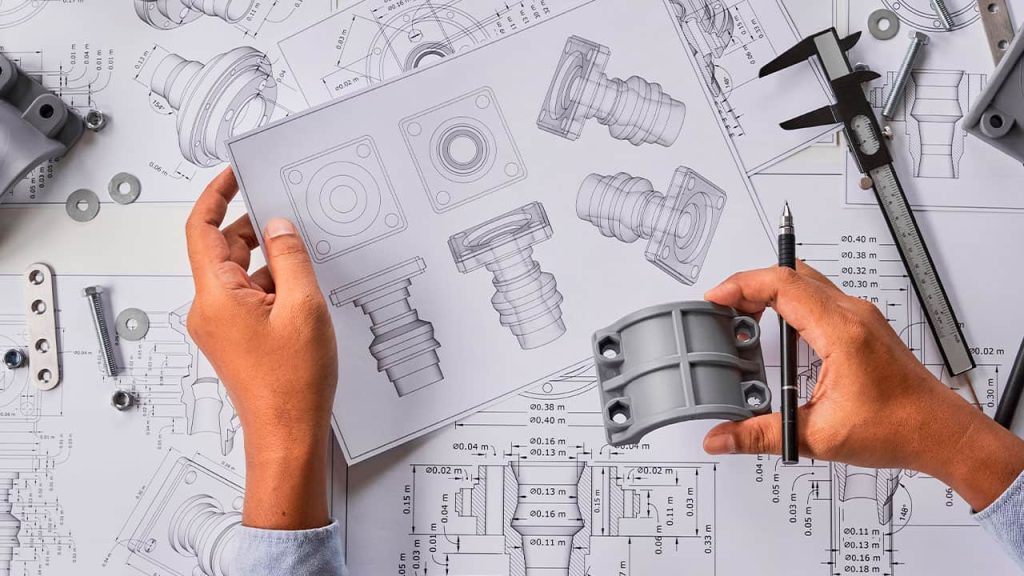
Difference between copyright and industrial property
What is the difference between copyright and industrial property? Possibly all authors have asked themselves this question at some time. If you are a creator, you will surely have heard about the importance of registering your work, whether it is the draft of a book or a utility model that allows you to manufacture a product. There are many types of works that can be registered!
The main purpose of copyright and industrial property laws is to safeguard creative work. So in this article we want to explain what types of works can be registered in each case, what they protect and how you can do it. We hope you find it very useful!
Are industrial and copyright property the same thing?
The first thing you should know is that industrial property and copyright protect different types of works.
On the one hand, copyright is a system of legal protection of intangible assets resulting from the creative activity and ingenuity of human beings. We are therefore talking about literary, artistic and scientific works. This covers a wide variety of creations: novels, poetry, pamphlets, drawings, paintings, scientific and academic articles, maps, plans, photographic works, choreographies, speeches, software… and many other types.
Intellectual property is divided into two categories: industrial property and copyright. Each category has its own scope and protects different types of works.
On the other hand, industrial property is the set of rights and rules that protect technical, practical or commercial works, such as inventions, trademarks, geographical indications and industrial designs. This includes products, processes, distinctive signs, even the aesthetic aspect of an article.

Have you ever read “registered trademark“? That text, precisely, warns that this trademark is protected by industrial property and that the exploitation rights of the same correspond exclusively to its owner.
In short, according to the above definitions, copyright and industrial property laws grant creators and inventors the exclusive enjoyment of the exploitation of their creations and inventions in order to protect them against possible abuses.
How to differentiate between copyright and industrial property?
In addition to the type of work that can be registered, there are also differences in terms of the rights that are acquired, what the registration is like and where it is carried out. Let us take a look at all these details:
Copyright and industrial property rights.
Another of the objectives of registration is to give the author rights over his work. Here we see a clear difference between copyright and industrial property. In the case of copyright, the author’s rights correspond to the creator, from the moment he creates his work. Legally it is not required to make any registration, although it is always advisable to have a proof of authorship (in the next point we will delve into this issue).
In this other article you can learn about the types of copyrights that exist.
In the case of industrial property, rights are acquired at the moment in which ownership or exclusivity is granted. That is to say, not from its creation, but from the moment in which the competent authority grants the exclusive rights after analyzing whether they are appropriate.
Copyright and industrial property registration
Another difference between industrial property and copyright is the rights-acquired. On the one hand, copyright constitutes proof of authorship, i.e. there is a document with a registration date that attributes the work to its creator. This would avoid a case of plagiarism or usurpation. Although it is not obligatory to register a work, most authors prefer to do so before sharing it with third parties or publishing it.
On the other hand, industrial property grants the exclusive right to manufacture and trade. Thus, only the holder of the rights can make use of them and exploit them, for the time indicated in the registration.

Geographical scope
It is important to know that both copyright and industrial property operate independently in each country, so when it comes to protecting a work you must decide whether you want to do so locally, nationally or internationally, registering it in different geographical areas.
However, for practical purposes, this should only be taken into account when talking about industrial property. For copyright cases, Safe Creative’s registration is covered by the Berne Convention guidelines, so it is valid in all signatory countries.
Where is copyright and industrial property registered?
This is a very common question. Copyright registration can be done through national registries in the countries that still maintain them, or through digital registries. And the truth is that more and more people opt for the latter, as it is a quick, simple and much cheaper process.
You can register your works in Safe Creative from 6,5€ per month.
Regarding the registration of industrial property, this is done in the national offices of each country. In the case of Spain, the body in charge of this management is the Spanish Patent and Trademark Office (OEMP in Spanish).
Can a work have intellectual and industrial property?
Although it may seem somewhat confusing, the answer is yes. However, this is a matter of debate even among experts.
It could be the case that a work is registered for both industrial property and copyright simultaneously. This is known as “cumulative protection”, a concept recognized by the World Intellectual Property Organization (WIPO).
Let’s look at an example to make it clearer. A case of cumulative protection could occur in works of craftsmanship and design, which can be considered copyright, due to the creation of the work itself, and also industrial property, due to its aesthetic aspect.
